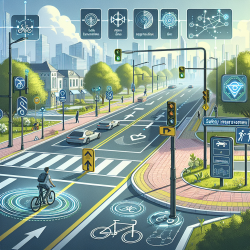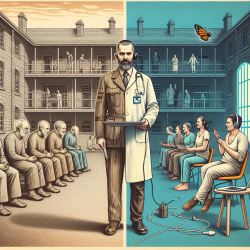In the quest to enhance cycling safety, the study "Comparing the effects of infrastructure on bicycling injury at intersections and non-intersections using a case–crossover design" offers invaluable insights. Conducted in Vancouver and Toronto, this research delves into the impact of various infrastructure elements on bicycling injury risk. By understanding and implementing the findings, practitioners can significantly improve safety for cyclists.
Key Findings and Recommendations
The study highlights several critical factors that influence cycling safety at both intersections and non-intersections. Here are the main takeaways:
At Intersections
- Intersection Type: Intersections of two local streets were found to be much safer than those of two major streets. The risk at local street intersections was about one-fifth that of major street intersections.
- Traffic Circles: Contrary to expectations, traffic circles on local streets increased the risk of injury. This suggests that traditional stop-controlled intersections may be safer.
- Motor Vehicle Speed: Lower vehicle speeds (<30 km/h) significantly reduced the risk of injury. Implementing speed reduction measures can enhance safety.
- Direction of Travel: Cyclists traveling in the opposite direction to motor vehicle traffic faced a higher risk of injury. Encouraging proper travel direction is crucial.
- Downhill Grades: Downhill slopes increased injury risk. Awareness and caution are advised when navigating such areas.
At Non-Intersections
- Cycle Tracks: Physically separated bike lanes (cycle tracks) were associated with a significantly lower risk of injury. Implementing more cycle tracks can improve safety.
- Local Streets with Diverters: Streets with diverters that reduce motor vehicle traffic had very low injury risks. Such measures should be considered in urban planning.
- Streetcar Tracks and Construction: The presence of streetcar tracks and construction sites increased injury risk. Clear demarcation and safe detours are necessary in these areas.
- Downhill Grades: Similar to intersections, downhill grades at non-intersections also increased injury risk.
Encouraging Further Research
While the findings provide actionable insights, they also highlight the need for further research. Different cities have varying infrastructure, and replicating this study in other locations can offer more comprehensive data. Additionally, exploring the impact of new infrastructure developments can provide ongoing guidance for urban planners and engineers.
Conclusion
By implementing the study's recommendations, practitioners can create safer environments for cyclists. From reducing vehicle speeds to increasing the number of cycle tracks, each step contributes to a safer and more cyclist-friendly city.
To read the original research paper, please follow this link: Comparing the effects of infrastructure on bicycling injury at intersections and non-intersections using a case–crossover design.










